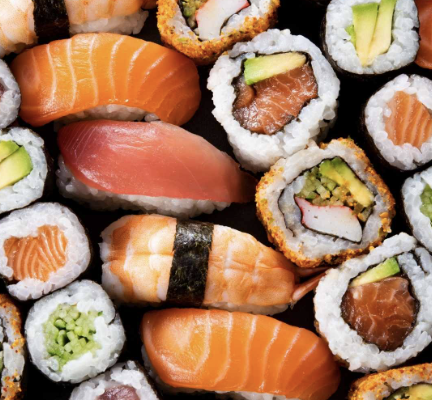The word ‘sushi’ often conjures up images of beautifully presented pieces of raw fish atop perfectly seasoned rice, served in modern restaurants with a side of wasabi, soy sauce, and pickled ginger. However, the origins of sushi are far removed from the contemporary version we relish today. Let’s embark on a historical journey to understand the evolution of sushi.
Early Beginnings:
- Ancient Southeast Asia: The origin of sushi can be traced back to the rice-growing regions of Southeast Asia around the 4th century BC. The initial concept was born out of a practical need for food preservation. Fish was cleaned, gutted, and then packed in fermented rice, which helped preserve the fish. Over time, the fish was consumed with the rice, leading to a fermented taste that many came to enjoy.
- China’s Influence: This method of fermenting fish in rice made its way to China, where it gained popularity. Eventually, the practice traveled to Japan, which has a coastal geography conducive to fishing.
Japan’s Transformation of Sushi:
- Narezushi: In Japan, this method evolved into what’s known as ‘narezushi’, the closest version to the original fermented sushi from Southeast Asia. The primary difference was the fermentation time. The fish was allowed to ferment for months, and once ready, the rice was discarded, and only the fish was consumed.
- Haya-zushi: With advancements in fermentation methods and culinary tastes, sushi underwent another transformation during the Edo period. The Japanese started making ‘haya-zushi’, where both rice and fish were meant to be consumed together. This is closer to the sushi we know today. Rice was seasoned with vinegar, fish, and other ingredients, such as vegetables, to create a dish that could be eaten immediately, marking a departure from the lengthy fermentation process of narezushi.
- Edo-style Sushi: In the 19th century, the fast-paced life of Edo (modern-day Tokyo) saw the emergence of ‘nigiri sushi’. It was a form of fast food where hand-pressed sushi was made with a slice of raw fish over vinegared rice. This style quickly spread in popularity and is what most people outside of Japan recognize as sushi today.
Global Popularity:
With the rise of Japanese emigrants in the 20th century, sushi began its journey across the world. The post-WWII era, especially in places like the United States, saw a boom in sushi’s popularity. Western tastes and ingredients, like avocado, were integrated, leading to inventions like the California roll.
Sushi’s evolution from a method of preservation in ancient Southeast Asia to a globally beloved delicacy is a testament to its adaptability and the timeless appeal of its flavors. It reflects the intersection of practical needs, culinary innovation, and cultural exchange. Today, sushi is not just a dish but an art form, with sushi chefs around the world dedicating years to perfecting their craft.
Sushi Inc. is a vibrant restaurant that offers what is considered the best sushi in St Pete. Opening its doors in 2013 and becoming a local staple by offering live music, traditional hand-rolled sushi and a friendly atmosphere, our guests always have a top notch experience. Customers love our award-winning, fresh and creative Sushi rolls, Nigiri, and Sashimi. With a larger selection of tempura, non-Sushi, and teriyaki options, we can accommodate every taste. Click here to make your reservation now!




